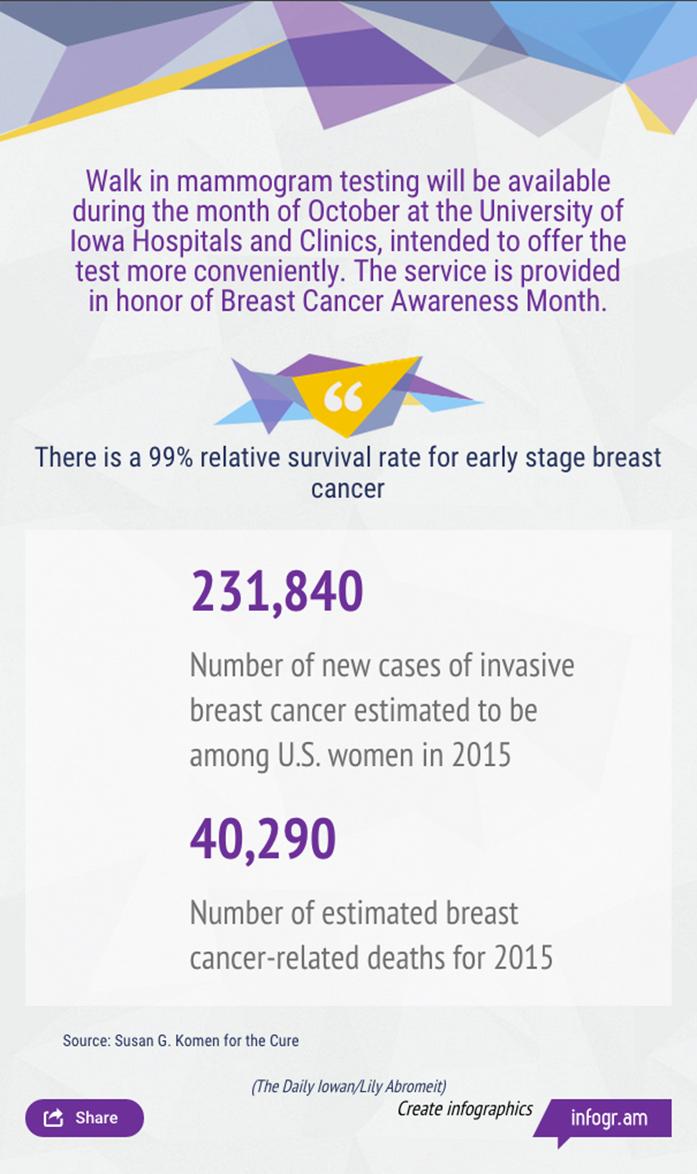By Tom Ackerman
[email protected]
Women looking for a potentially life-saving test can now walk in and not only on Wednesdays.
Walk-in mammogram testing will be available during the month of October at the University of Iowa Hospitals and Clinics, intended to offer the test more conveniently. The service is provided for Breast Cancer Awareness Month.
Such expanded service first began in 2012, when tests were given without needing an appointment during the month, but only on Wednesdays, said UIHC spokesman Tom Moore. About 160 such mammograms were conducted last year.
“With the success of the walk-in Wednesdays concept, we’ve extended them this year to essentially the entire month of October,” Moore said.
Hours for testing range from 8 a.m. to 4 p.m. Monday through Friday until the end of the month.
The program makes the process more convenient, said Deborah Havel-Korson, clinical chief of breast imaging at UIHC. People often avoid testing when an appointment is necessary, she said.
“You’re here,” Havel-Korson said. “Let’s get it done.”
Moore said women should receive yearly exams in order to stay healthy. Women who have had a test in the past year may not qualify for the month’s service to create space for those who are in need.
“Mammography remains one of the best defenses against breast cancer,” Moore said. “It enables us to detect the disease earlier.”
 Furthermore, UIHC offers an advanced 3D method to gather a more accurate reading.
Furthermore, UIHC offers an advanced 3D method to gather a more accurate reading.
Havel-Korson said the UIHC is one of about 25 in the state offering the 3D method, which she compares to reading pages in a book.
“You’re able to see through tissue that you wouldn’t normally get to see,” she said.
Medical professionals can pick up additional information by looking through the dozens of images, rather than a holistic view of what’s going on, she said.
Havel-Korson placed an emphasis on the test’s importance for women.
In 2015, there will be an estimated 231,840 cases of invasive breast cancer and 40,209 deaths in the United States, according to the Susan G. Komen cancer group.
“Early detection of breast cancer continues to be our first and best defense against this disease,” said Leonel Vasquez, a UI clinical associate professor of radiology.
Havel-Korson recognizes the process may be uncomfortable for some, but yearly exams are critical, especially as women get older.
“Breast cancer starts out very small, and if you catch it when it’s small, you can treat it better,” she said. “We use compression, and some women have a hard time in that.”
In a standard mammogram procedure, some women would have to be called back for additional imagining or maybe an ultrasound, she said, but are no longer required to do so with the new technology.
“Because of the technology, we are able to reduce that rate, then that reduces anxiety for the patient,” Havel-Korson said.












